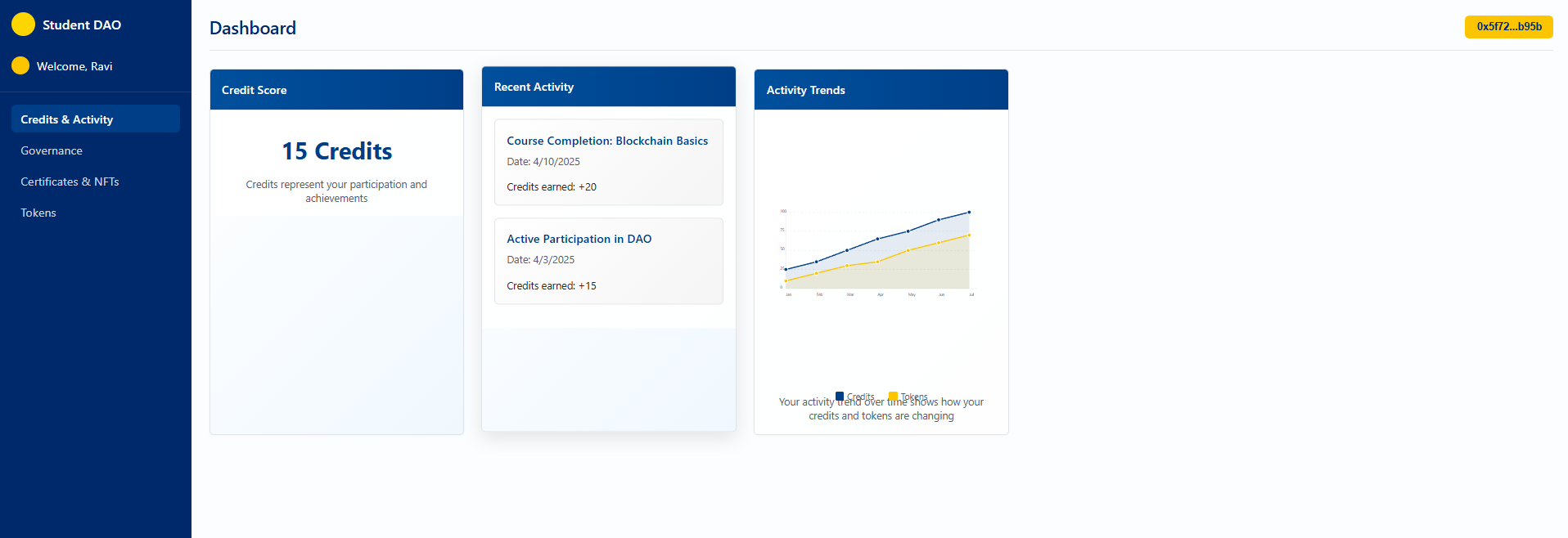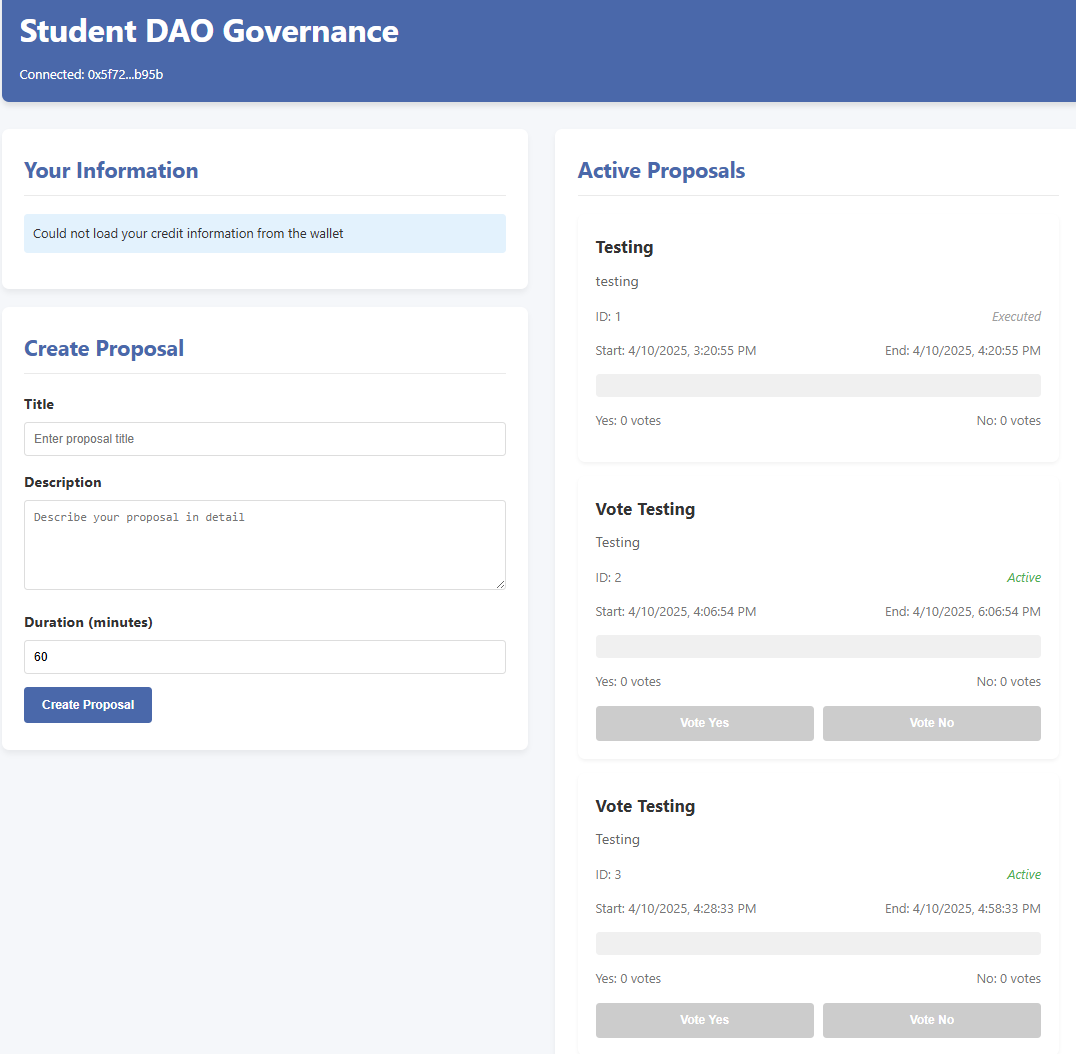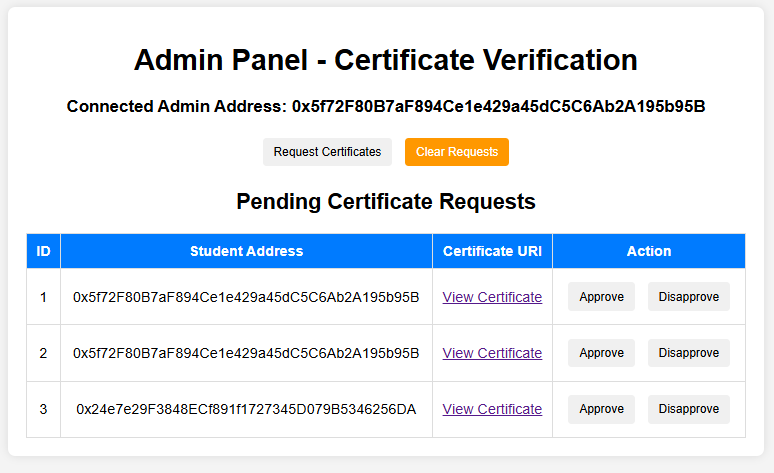WisDAOm
DAO-based blockchain platform for students is a revolutionary decentralized system that enhances academic credibility, promotes fair governance, and incentivizes student achievements.
Videos
Description
(UnderDevelopment) DAO-based blockchain platform for students is a revolutionary decentralized system that enhances academic credibility, promotes fair governance, and incentivizes student achievements. Below is a detailed explanation of its core components and functionalities.
1. Academic Certificate Management (Blockchain-Based Storage)
Problem Statement: Traditional academic certificates are prone to loss, forgery, and inefficiencies in verification. Employers and institutions often face delays and difficulties in verifying student credentials.
Solution:
The platform digitally stores all academic certificates on a blockchain ledger, making them immutable, tamper-proof, and easily verifiable.
Each student’s certificate is linked to their unique blockchain ID, ensuring secure access while maintaining privacy.
Universities, employers, and other institutions can instantly verify the authenticity of certificates, eliminating fraudulent claims.
Technical Aspects:
Smart contracts automate certificate issuance and verification.
Decentralized storage (IPFS or similar solutions) ensures certificates are securely stored off-chain while the blockchain holds proof of authenticity.
Zero-Knowledge Proofs (ZKP) can be implemented for selective certificate disclosure, enhancing privacy.
2. Decentralized Student Voting System (Tamper-Proof Governance)
Problem Statement:
Centralized student governance systems can be manipulated, lack transparency, or be influenced by external authorities.
Many student elections or decision-making processes are biased, leading to unfair outcomes.
Solution:
The platform implements a student-run decentralized voting system to ensure fair and transparent decision-making.
Voting is executed via smart contracts, making it immutable and tamper-proof.
Every student gets a unique voting token that prevents multiple voting or fraudulent participation.
The entire voting process is visible on the blockchain, ensuring complete transparency while maintaining voter privacy.
Technical Aspects:
Proof-of-Identity via Blockchain ensures only verified students participate in voting.
DAO-Based Decision-Making allows students to vote on important issues, with decisions executed automatically via smart contracts.
Quadratic Voting (Optional) provides a fairer system where students allocate multiple votes to issues they care about most, reducing the risk of vote monopolization.
3. Token-Based Reward System (Student Incentivization)
Problem Statement:
In traditional education systems, students are not rewarded for their academic achievements or extracurricular contributions.
There is no motivation mechanism to encourage participation in learning and governance.
Solution:
The system rewards students with blockchain-based tokens based on:
Academic performance (marks, GPA, research contributions).
Extracurricular achievements (competitions, hackathons, sports).
Participation in student governance or community initiatives.
These tokens hold real-world value and can be redeemed for scholarships, tuition fee discounts, course enrollments, and other benefits.
Students can trade, hold, or use these tokens in an internal or external marketplace.
Technical Aspects:
Smart contract-based reward distribution automatically assigns tokens based on performance metrics.
Tokenomics model defines how tokens are generated, distributed, and utilized within the ecosystem.
Liquidity options allow potential integration with DeFi platforms, enabling students to stake or exchange tokens.
4. Security, Privacy, and Scalability Considerations
Zero-Knowledge Proofs (ZKP): Allows students to prove their academic credentials without revealing unnecessary details.
Layer-2 Scaling (e.g., Polygon, Optimism): Reduces transaction costs and ensures faster execution of smart contracts.
Interoperability with Other Systems: Supports cross-chain communication for broader adoption.
Key Benefits of the System
Decentralization – No central authority controls the certificates, voting, or reward system.
Transparency & Trust – All records and decisions are public and immutable on the blockchain.
Security – Eliminates fraud, manipulation, and loss of academic credentials.
Fairness & Autonomy – Students have complete control over their credentials and governance participation.
Incentivization & Motivation – Encourages students to excel academically and contribute to the student community.



Progress During Hackathon
AceHack 4.0
Tech Stack
Fundraising Status
0$ For Right Now . Planning to Make a product with Software as a Service (Yearly Sub)